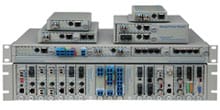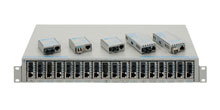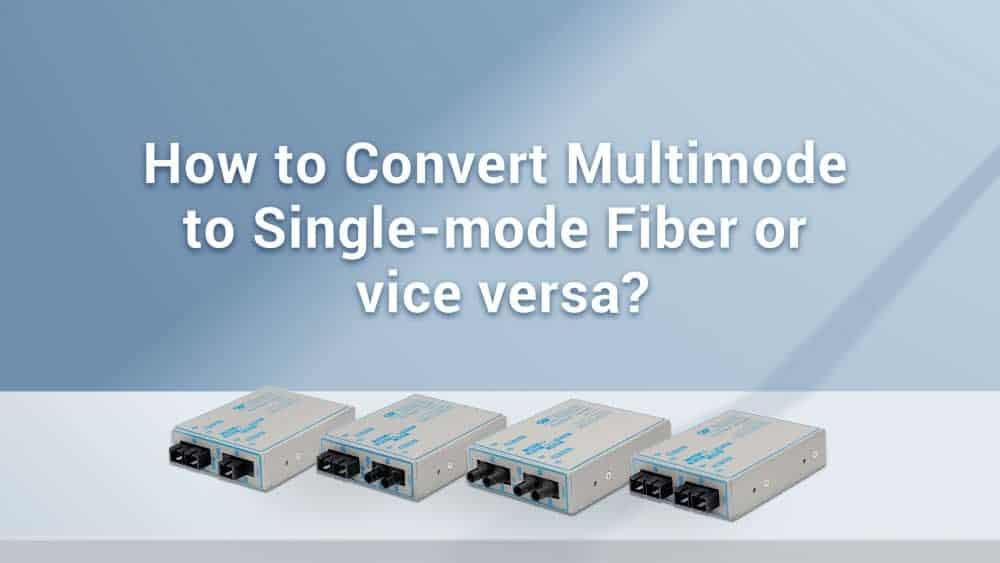- Products
- PoE Media Converters and Switches
- Ethernet & PoE Switches Product Selector
- Multi-Gigabit Ethernet and PoE Switches
- PoE PSE Commercial Switches
- PoE PSE Industrial Fiber Switches
- PoE Industrial Copper Extenders
- PoE Powered Media Converters
- PoE PSE Media Converters
- PoE Extenders & Injectors Product Selector
- Pluggable Transceivers Product Selector
- Single Pair PoE Products
- Product Lines

- iConverter Managed Multi-service Platform
- Copper to Fiber Media Converters
- Ethernet Media Converters
- 10 Gigabit Copper-to-Fiber
- 10/100/1000 Copper to 10 Gigabit Fiber
- 10/100/1000 Copper-to-Fiber with Integrated Management
- 10/100/1000 Industrial Copper-to-Fiber with Integrated Management
- 10/100/1000 Copper-to-Fiber with VLAN
- 10/100/1000 Dual Media Converter with VLAN
- Gigabit Copper-to-Fiber
- 10/100 Copper-to-Fiber with Integrated Management
- 10/100 Industrial Copper-to-Fiber with Integrated Management
- 10/100 Copper-to-Fiber with VLAN
- 10/100 Copper-to-Fiber
- Fast Ethernet Copper-to-Fiber
- Fast Ethernet Redundant Links
- 10Mbps Copper-to-Fiber
- 10Mbps Copper to Coax
- TDM Media Converters
- Serial Media Converters
- Ethernet Media Converters
- Fiber to Fiber Media Converters
- 10 Gigabit Fiber-to-Fiber Converter and Transponder
- 10 Gigabit Industrial Converter and Transponder
- SFP-to-SFP Fiber Converter and Transponder
- SFP-to-SFP Industrial Fiber Converter and Transponder
- Gigabit Fiber to-Fiber with 3 Rs
- 100/1000 Fiber-to-Fiber with 3 Rs
- Gigabit Fiber-to-Fiber
- Fast Ethernet Fiber-to-Fiber with 3 Rs
- Fast Ethernet Fiber-to-Fiber
- OC-3/STM-1 Fiber-to-Fiber
- OC-12/STM-4 Fiber-to-Fiber
- Carrier Ethernet Network Interface Devices
- CE 2.0 - 10G Demarcation NID
- CE 2.0 - 10/100/1000 Mult-port NID
- CE 2.0 - 10/100/1000 Mult-port NID with PoE
- CE 2.0 - 10/100/1000 8-Port NID
- CE 1.0 Service OAM - 10/100/1000 NID
- CE 1.0 Link OAM - 10/100/1000 Copper-to-Fiber NID
- CE 1.0 Link OAM - 10/100 Copper-to-Fiber NID
- CE 1.0 Link OAM - Gigabit Fiber-to-Fiber NID
- CE 1.0 Link OAM - Fast Ethernet Fiber-to-Fiber NID
- CWDM Multiplexers
- T1/E1 Multiplexers
- Ethernet Switch Modules
- Management System
- Chassis Options

- 1-Module Industrial Chassis

- RuggedNet Industrial Switches and Extenders
- Industrial PoE PSE Fiber Switches
- Multi-Gigabit Managed Industrial PoE+/BT Switches
- Multi-Gigabit Unmanaged Industrial PoE+/BT Switches
- 10G Managed 802.3bt PoE Switches
- 10G Unmanaged 802.3bt PoE Switches
- 10G Managed PoE+ Switches
- 10G Unmanaged PoE+ Switches
- 1G Managed PoE+ Switches
- 1G Unmanaged PoE+ Switches
- 1G Unmanaged 802.3bt PoE Switches
- 1G Managed 802.3bt PoE Switches
- Industrial SPE Switches
- Industrial Ethernet Switches
- Industrial PoE Copper Extenders
- Industrial Power Supplies

- OmniConverter Media Converter, Switches and Extenders
- PoE PSE Media Converters
- 10G Multi-Gigabit / Multi-Rate PoE Media Converter
- 10G Multi-Gigabit / Multi-Rate Media Converter
- 10/100 Multi-port PoE+ Media Converter
- 10/100 PoE+ Media Converter
- 10/100/1000 Multi-Port PoE+ Media Converter
- Industrial 10/100/1000 Multi-Port PoE+ Media Converter
- 10/100/1000 PoE+ Media Converter
- 10/100/1000 PoE++ 60W-100W Media Converter
- Industrial 10/100 Multi-port PoE+ Media Converter
- 1U Rack-Mount Shelf
- PoE PSE Compact Switches
- Multi-Gigabit Managed PoE+/BT Switches
- Multi-Gigabit Unmanaged PoE+/BT Switches
- 10G Managed 802.3bt PoE Switches
- 10G Unmanaged 802.3bt PoE Switches
- 10G Managed PoE+ Switches
- 10G Unmanaged PoE+ Switches
- 1G Managed PoE+ Switches
- 1G Unmanaged PoE+ Switches
- 1G Managed 802.3bt PoE Switches
- 1G Unmanaged 802.3bt PoE Switches
- Ethernet Switches
- Single Pair Ethernet (SPE)
- PoE Copper Extenders
- PoE Injectors

- miConverter Unmanaged Miniature Media Converters
- 10/100/1000 Copper-to-Fiber
- Industrial 10/100/1000 Copper-to-Fiber
- 10/100/1000 Ultra-Compact Copper-to-Fiber
- Gigabit Copper-to-Fiber
- 10/100/1000 Copper-to-Fiber PoE Powered
- 10/100 Copper-to-Fiber
- 10/100 Ultra-Compact Copper-to-Fiber
- 10/100 Copper-to-Fiber PoE Powered
- 18-Module Chassis
- Industrial 10/100 Copper-to-Fiber PoE Powered

- FlexSwitch Compact Switches
- Solutions
- Company
- Support
- How to Buy
How to Convert Multimode to Single-Mode Fiber and Vice Versa

Today’s networks use fiber optic cabling to support the high bandwidth, high transmission speeds and high transmission distance applications. Two types of fiber optic cabling are used in the network today. Multimode fiber cabling is used for indoor, short distance applications and single-mode fiber cabling is used for outdoor, long distance application.
To connect multimode to single-mode and single-mode to multimode, a fiber-to-fiber media converter is needed to convert multimode to single-mode fiber or vice versa. Let's analyze the differences between multimode and single-mode fiber to understand why networks require fiber mode conversion and how to convert multimode to single-mode fiber and vice versa.
Multimode Fiber vs Single-mode fiber
Multimode fiber (MMF) and single-mode fiber (SMF) are types of fiber optic cabling types designed to transmit light signals over long distances. The main difference between multimode fiber (MMF) and single-mode fiber (SMF) is in the size of the fiber cores and the devices that connect to them. The core size determines the distance a signal can travel without signal distortion. Larger the core size the shorter the distance. That is the main reason multimode fiber is used for indoor applications.
| Fiber Optic Types | Core Size | Wavelength | Transmission Distance |
|---|---|---|---|
|
Multimode Fiber (MMF) |
50 or 62.5 microns |
850/1310nm |
2 kilometers |
|
Single-mode Fiber (SMF) |
8 to 9 microns |
1310/1550nm |
140 kilometers |
Multimode Fiber (MMF)
As its name indicates, multimode optical fiber carries multiple light rays simultaneously at different speeds and reflection angles due to its larger core diameter. Multimode fiber core is typically 50 or 62.5 microns and is used in premises applications with up to 10 Gbps data rates. Multimode fiber (MMF) transmits data over shorter distances but provides high bandwidth at high speeds.
If you exceed the distance limit of multimode fiber, the data being transmitted may experience attenuation, or a loss of signal strength. This can result in errors in the transmitted data, which can lead to data corruption or loss. The distance limit for multimode fiber is determined by the quality of the fiber and the type of signal being transmitted. Generally, the longer the distance of the multimode fiber, the greater the attenuation.
There are several different types of multimode fiber available for high-speed network applications, and each with a different distance and speed capability. The table below shows the difference between the types of multimode cabling.
Distance / Speed on Multimode Fiber
| Catalog | Type | Core | 1G | 10G |
|---|---|---|---|---|
| OM1 | Multimode | 50 micron | 220 meters | 33 meters |
| OM2 | Multimode | 50 micron | 550 meters | 82 meters |
| OM3 | Multimode | 50 micron | 550 meters | 300 meters |
| OM4 | Multimode | 50 micron | 550 meters | 400 meters |
Multimode fiber (MMF) is cheaper than single-mode fiber (SMF) as it uses LED light, which is not powerful. Multimode fiber is used for short distances to connect devices in one particular building. The maximum distance for multimode fiber (MMF) is 2 km for 100Mbps applications.
Single-mode Fiber (SMF)
Single-mode fiber (SMF) is a single strand of glass fiber that transmits data over long distances with a higher transmission speed that can emit only a single ray of light at any time. Single-mode fiber core is typically 8 to 9 microns, which is smaller than multimode fiber (MMF) and is used for longer-distance applications with up to 100 Gbps data rates. Single Mode fiber (SMF) cable uses laser light and is, therefore, more expensive than multimode fiber. Single-mode fiber (SMF) is used to connect devices over longer distances. The maximum distance for single-mode fiber is 140 kilometers.
Fiber Mode Conversion Considerations
When you consider fiber mode conversion, you need to consider the following factors:
-
Fiber type: Single-mode and multimode fibers have different core diameters and support different transmission distances. It is important to choose the appropriate type of fiber for the application and that is compatible with the equipment you are connecting.
-
Connector type: Single-mode and multimode fibers use different types of connectors. Make sure that the connectors on both ends of the fibers are compatible with each other. Fiber optic connectors are located at each end of a fiber optic cable to connect to the network switches, media converters and transponders. There many types of connectors, including SC, LC, FC and ST. So, it's important to know what type of fiber connector is being used for the network equipment and the cable.
-
Wavelength: The wavelength of the light used to transmit data over the fiber can affect the performance of the fiber. Single-mode and multimode fibers have different wavelengths of operation. Ensure that the wavelengths are compatible with each other.
-
Cost: Converting between fiber types can be expensive, but will save you money versus the alternative – replacing the existing fiber or forklifting the existing network equipment! It is more cost-effective and quicker to use a media converter to convert from single-mode to multimode fiber.
-
Standards and Regulatory compliance: Make sure that the conversion is compliant with industry standards and regulations to ensure safety and compatibility with other equipment, as well as adhering to requirements imposed by governments.
Omnitron Fiber Mode Conversion Solutions
Fiber mode conversion is the process of changing a multimode fiber (MMF) into a single mode or vice versa. There are a couple of ways to connect multimode to single-mode. A mode conditioning cable can be used or a fiber transponder. When using mode conditioning cables you will need to know what type of multimode fiber (OM1, OM2, etc). Mode conditioning cable also adds signal loss or attenuation to your data transmission, so this may not be a good solution. Fiber transponders do not add attenuation or the need to know what type of multimode cabling is being used.
Multimode to Single-mode Fiber Conversion with Media Converters
Fiber-to-fiber media converters enable network connectivity across the distance between the switches and extend a multimode network over single-mode fiber links with distances up to 140km for Fast Ethernet and 80km for Gigabit Ethernet.
In this application, a network requires multimode to single-mode fiber conversion to connect two buildings with multimode networks over a single-mode fiber link, as the SMF supports longer distances than multimode fiber (MMF). To connect these two buildings over a single-mode fiber link, each Ethernet switch equipped with multimode fiber ports must be connected to each fiber-to-fiber media converter, which converts the multimode fiber (MMF) to single-mode fiber (SMF).

Multimode SFPs to Single Mode with Transponders
In this application, the network requires multimode to single-mode fiber conversion to connect these two multimode networks over a single-mode fiber link. The main difference between this application and the application before is that you can use transponders with multimode and single-mode SFPs rather than a fiber-to-fiber media converters with fixed fiber ports. The transponders can reduce the cost by up to 50% and can provide the 850nm multimode to 1310nm single mode fiber conversion.

Omnitron Dual Fiber to Single-Fiber Conversion Application
Networks may require conversion between dual and single fiber, depending on the type of equipment and the fiber installed in the facility. In this application, two dual fiber switches are connected via single-fiber using dual fiber to single-fiber media converters. Since BIDI single-fiber uses two separate wavelengths over the same fiber strand, the transmit (Tx) on the media converter at one end of the fiber link matches the receive (Rx) from the media converter at the other end and vice versa.

Omnitron Multimode to Single Mode Fiber Conversion Products
Omnitron offers Transponders and fiber-to-fiber media converters that provide multimode to single-mode conversion and dual fiber to single-fiber conversion and support a variety of network protocols, data rates, and cables. Here is the list of products that are used in both applications above.
iConverter® Transponders and Fiber-to-Fiber Media Converters
Omnitron offers protocol-transparent fiber-to-fiber media converters that provide optical amplification and distance extension, multimode to single-mode conversion, dual fiber to single fiber conversion and standard wavelength to WDM wavelength conversion. These converters also support data rates up to 11.32Gbps.
FlexPoint™ Fiber-to-Fiber Media Converters
FlexPoint is an unmanaged Fiber-to-Fiber media converter that provides multimode to single mode conversion and supports different network protocols, data rates and cabling media types.
Conclusion
Fiber mode conversion is needed to enable connectivity between multimode and single-mode fiber cables, or to connect a multi-mode fiber cable to device that accepts single-mode wavelengths (or vice-versa). If you have a question about multimode to single mode fiber conversion, or if you are still trying to decide which of the following products is best suited to your network, contact Omnitron systems technicians to receive pre-sale support. All Omnitron Systems fiber media converters are designed and manufactured in the USA, comply with TAA and NDAA, feature a lifetime warranty and come with free 24/7 technical support. We are available 24 hours a day, seven days a week, 365 days a year, to answer your questions. EMAIL US YOUR QUESTIONS.
Resources:
https://www.techopedia.com/definition/14831/multi-mode-fiber
https://www.techopedia.com/definition/13288/single-mode-fiber
https://www.qsfptek.com/article/multimode-to-single-mode-fiber-conversion-tutorial
https://www.omnitron-systems.com/solutions/convert-multimode-to-single-mode-fiber
https://www.omnitron-systems.com/solutions/convert-dual-fiber-to-single-fiber









